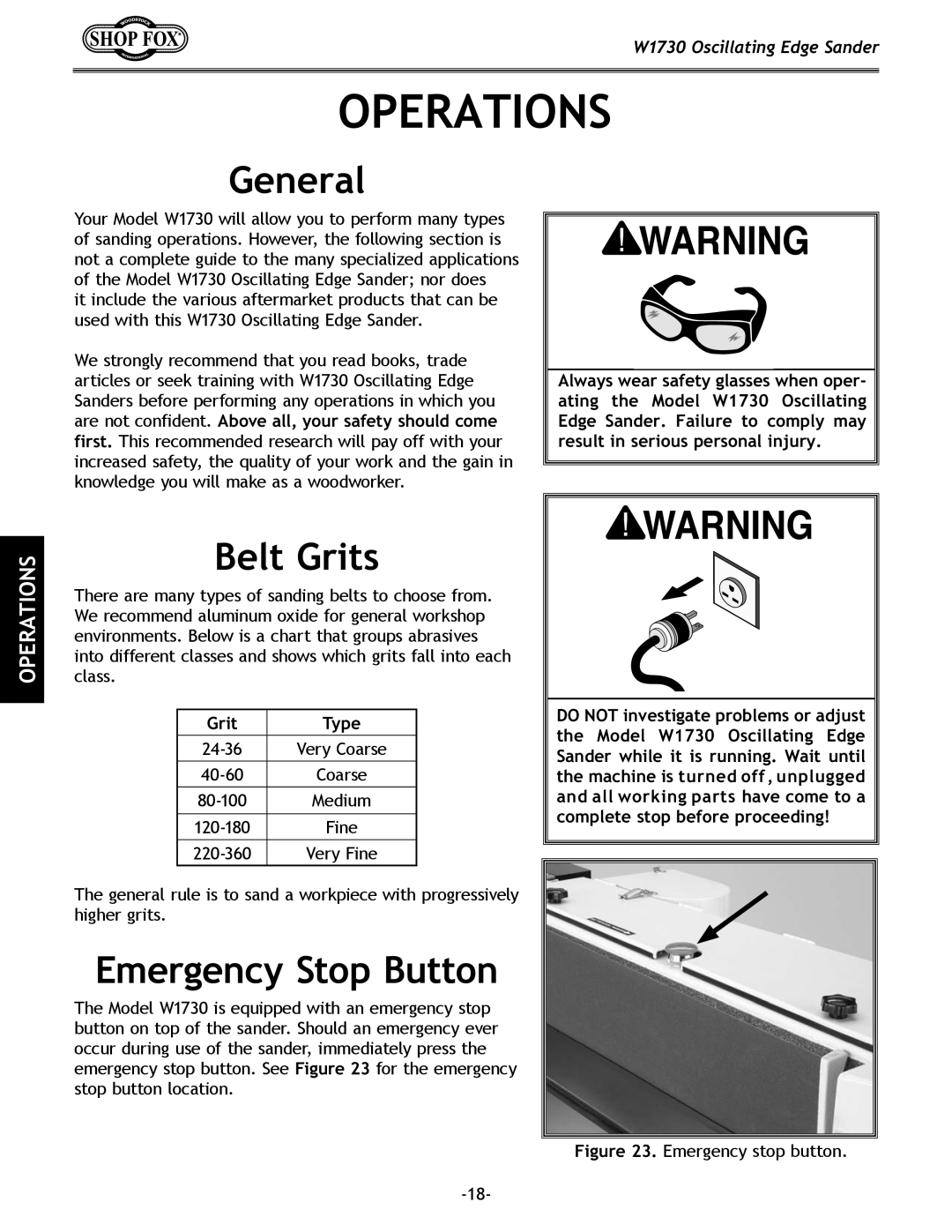
W1730 Oscillating Edge Sander
OPERATIONS
General
Your Model W1730 will allow you to perform many types of sanding operations. However, the following section is not a complete guide to the many specialized applications of the Model W1730 Oscillating Edge Sander; nor does
it include the various aftermarket products that can be used with this W1730 Oscillating Edge Sander.
We strongly recommend that you read books, trade articles or seek training with W1730 Oscillating Edge Sanders before performing any operations in which you are not confident. Above all, your safety should come first. This recommended research will pay off with your increased safety, the quality of your work and the gain in knowledge you will make as a woodworker.
Always wear safety glasses when oper- ating the Model W1730 Oscillating Edge Sander. Failure to comply may result in serious personal injury.
OPERATIONS
Belt Grits
There are many types of sanding belts to choose from. We recommend aluminum oxide for general workshop environments. Below is a chart that groups abrasives into different classes and shows which grits fall into each class.
Grit | Type |
Very Coarse | |
Coarse | |
Medium | |
|
|
Fine | |
Very Fine |
The general rule is to sand a workpiece with progressively higher grits.
Emergency Stop Button
The Model W1730 is equipped with an emergency stop button on top of the sander. Should an emergency ever occur during use of the sander, immediately press the emergency stop button. See Figure 23 for the emergency stop button location.
DO NOT investigate problems or adjust the Model W1730 Oscillating Edge Sander while it is running. Wait until the machine is turned off, unplugged and all working parts have come to a complete stop before proceeding!
